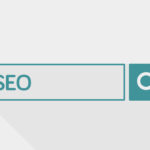Marketing ROI Measurement Tips
Keeping track of your marketing campaign measurements, including budgets and click through rates, is crucial to understanding and monitoring your marketing return on investment (ROI).
When working online there are some customer relationship management (CRM) tools that can offer an all-in-one solution for both sales and marketing teams. There are also tools that are specific to social media campaigns or even email marketing programs, and those that visually show the state of key business areas and can be used to manage your marketing ROI by tracking your prospects and alerting you to those that need attention.
Why Return on Investment Is a Crucial Measurement
Once you have specific goals in place – for example, reaching a threshold number of followers on social media, or PPC advertising click through versus conversion rates – you need to calculate the ROI on your marketing programs so you know what’s working and what isn’t. This can be challenging because there are so many different ways to measure digital marketing effectiveness.
There are countless tools, easily available online, for measuring digital marketing ROI, such as web analytics tools; Google Analytics or HubSpot Analytics, as well as using social media follower counts and engagement analytics, also A/B testing of email or landing page campaigns to determine which tactics generate the most leads, sales and revenues.
In a Nutshell
Apart from “I love you”, no three words are more wonderful and heart thumping to hear while at work than, “return on investment”.
Measuring ROI on each marketing activity, whether online, or any other medium, is critical to proving our effectiveness. That means the pressure is on to calculate ROI in ways that yield accurate, supportable numbers, particularly pertaining to marketing expenditures.
Basic ROI Calculation
The sums are pretty simple, but the components aren’t always easy to figure out. Any solid ROI calculation should measure revenue generated by the marketing campaign, profit margin on the items sold, and marketing-related expenses. Profit margin can be difficult to quantify because it incorporates the cost of operations, but it’s a necessary ingredient to calculate ROI accurately.
Keep in mind that to be able to quantify revenue generated by the marketing campaign, those campaigns need to have been designed to capture responses in the form of revenue from sales.
In its simplest form, the calculation looks like this:
ROI = Campaign Revenue X Profit Margin / Cost of Campaign
The elementary ROI calculation is a solid metric for getting a quick ‘toe in the water’ check on campaign performance, working for basic comparisons, such as ‘Campaign 1 is doing better than Campaign 2’ or ‘we improved this month over last month’.
That formula is also useful for measuring pilot marketing campaigns, since those efforts are often launched with one-time investment costs or temporary extraordinary expenses that wouldn’t apply once project efficiencies are captured in a full-blown campaign.
While the basic ROI calculation is a good starting point and it keeps things reasonably simple, it lacks several key enhancements. The calculation sometimes doesn’t factor in all of the costs associated with the campaign, which are required to evaluate the overall effectiveness.
The Advanced Version
Advanced ROI calculations should include all of the costs associated, including: salaries, benefits, office space, computers, software, energy bills, plus all of the direct campaign costs. All of those costs added together would give you the “cost of campaign” figure in the formula.
Coincidentally, applying the right tools to excavate the important numbers that improve marketing ROI, will also reveal ways that you can get closer to the customer.





